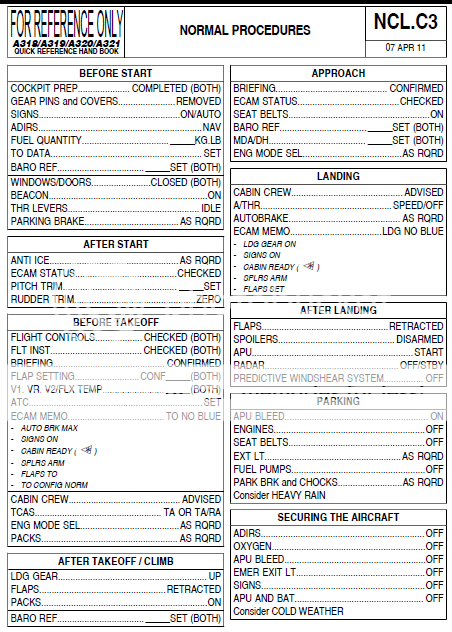Topper
Pre-takeoff checklist
I fly a 182 and and don't use the checklist as religiously as I should. Especially my descent and landing checklists. The 182 is so simple that I can get away with it, but it is a bad habit. I want to make using it a habit.
I plan to upgrade to a twin in the future and I know it is important and the more complex and the more different airplanes I fly, the more critical it becomes. I am thinking about knocking out my twin rating this spring even though I am not ready to move up. I hope that part of learning the twin will include the proper use of checklists.
Any advice on how to become better at checklist. Please don't respond if your answer is "just start using it and it will become habit" I get that, I need some ideas to help me to remember to use is so it becomes habit, no matter what I am flying.
Thanks,
Jim
I plan to upgrade to a twin in the future and I know it is important and the more complex and the more different airplanes I fly, the more critical it becomes. I am thinking about knocking out my twin rating this spring even though I am not ready to move up. I hope that part of learning the twin will include the proper use of checklists.
Any advice on how to become better at checklist. Please don't respond if your answer is "just start using it and it will become habit" I get that, I need some ideas to help me to remember to use is so it becomes habit, no matter what I am flying.
Thanks,
Jim



 Don't think so.
Don't think so. 